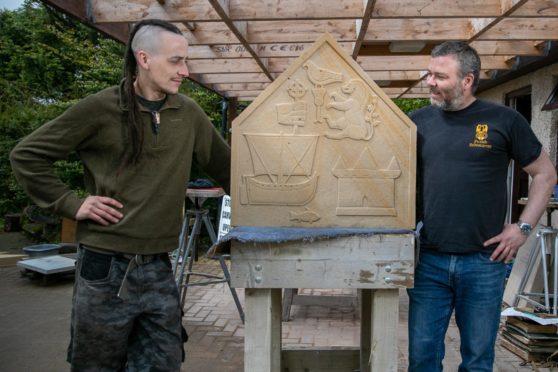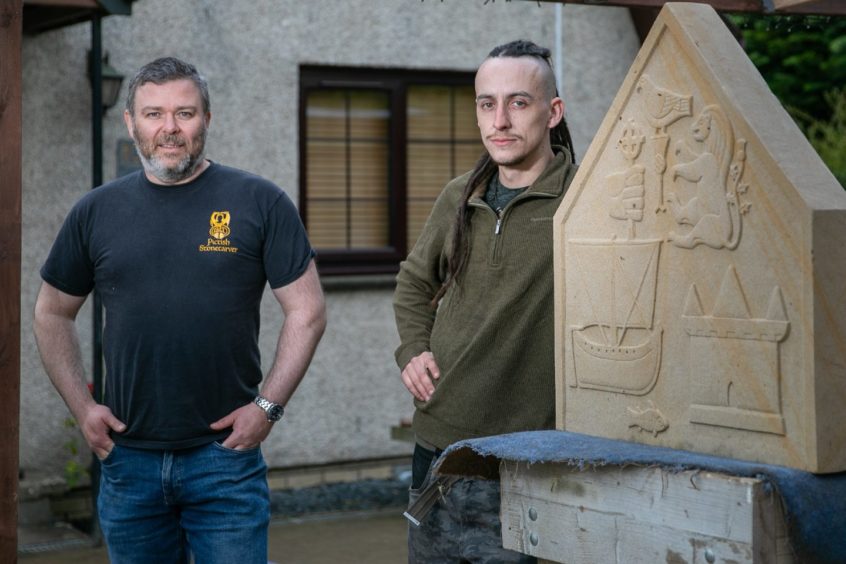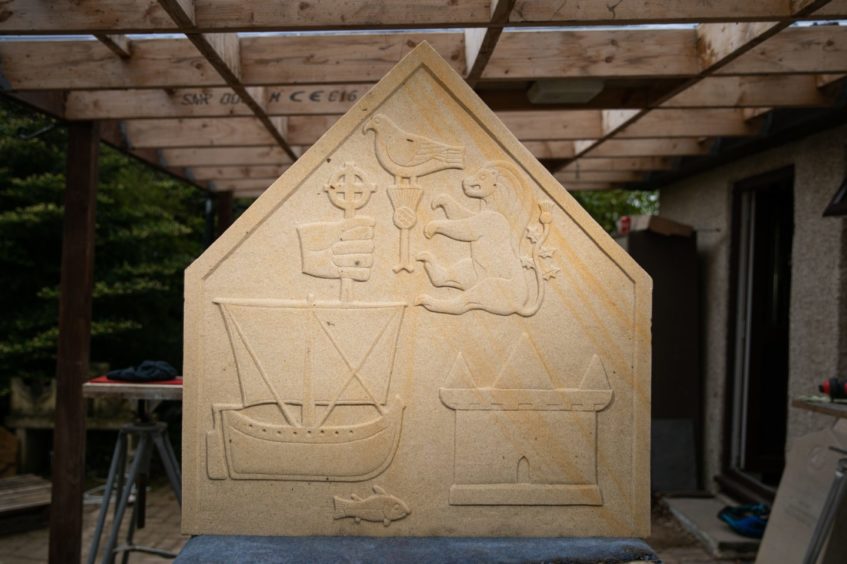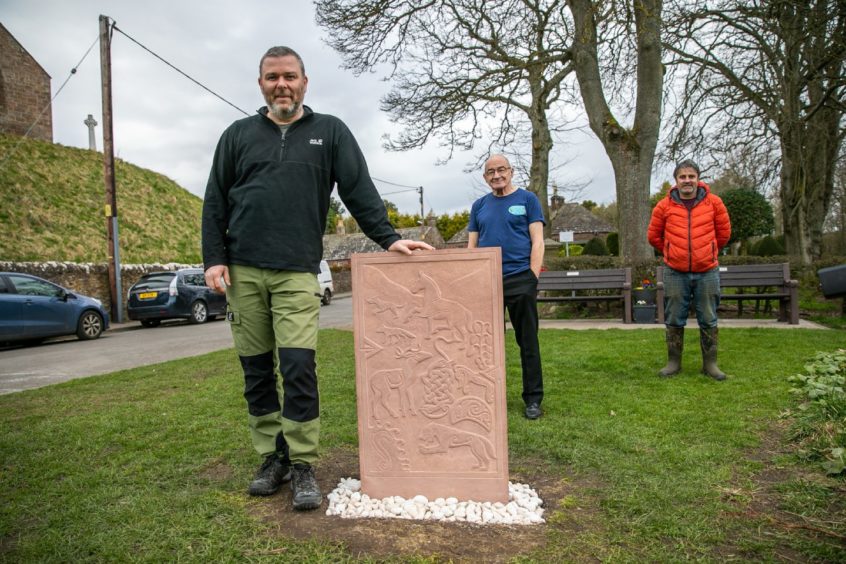A talented young stone sculptor has completed his Angus training with the recreation of a clan symbol steeped in intrigue.
Monikie Rock Art trainee Dean Gowans has been working on the full-size replica of the Howmore Armorial panel, a late medieval carved stone from the isle of South Uist.
The 360 pound original is thought to have been carved in the late 16th century for a chief of Clanranald.
But it achieved notoriety in the 1990s when it was stolen – only to reappear years later in a London flat.
It was returned to South Uist and is now in Kildonan museum.
Trust project
The new replica was commissioned by the Clanranald Trust.
It is to be installed above the door of ‘The Chief’s House’ at their recreation of a medieval village at Duncarron, near Stirling.
Dean joined David McGovern at his Monikie Rock Art business for a two-year traineeship in 2019.
The final part of his training was to do the drawing and most of the carving of Clanranald stone.
David said: “Dean arrived here as a talented artist and we’ve turned him into a talented stone-carver.
“We’ll continue to work together I hope as we’ve become good pals.
“He’s had a great opportunity to work on this fascinating project and has made a really good job of it.
“It’s been a pleasure to guide him through the process of stone choice, ordering, research, heraldic permissions, pricing and delivery.”
Dean said: “David has taught me so much about stone, history and running a heritage stone carving business.
“This was my first large-scale carving and I was a bit nervous.
“I’m very happy with the result and can’t wait to see it installed permanently at Duncarron”.
Monikie Rock Art was founded in 2013 by David and produces museum replicas, public monuments and custom stone carvings.
Among his noteable carvings are the New Forteviot Cross and Monifieth replica in Dundee’s McManus Museum.
He has also carved two modern Pictish stones for a historic St Vigeans site near Arbroath, the most recent unveiled as a tribute to conservation campaigner Ralph Coutts.
Mysterious discovery
The missing Western Isles stone was uncovered in a flat undergoing renovation in Euston’s Burton Street.
The flat was in need of urgent repair and being prepared for work by its owners, Paddington Churches Housing Association.
Canadian parents of the previous occupier, who had recently died, were clearing out their late son’s possessions.
The Ontario father noticed the stone’s ornate carving and contacted the British Museum.
Experts there instantly recognised the features as being late mediaeval Celtic, and got in touch with National Museum of Scotland counterparts.
They confirmed it as the stone reported stolen from South Uist in 1990.
A map found in the London flat marked the supposed spot where the stone had been taken from – but wrongly identified a location 40 miles away on North Uist.



